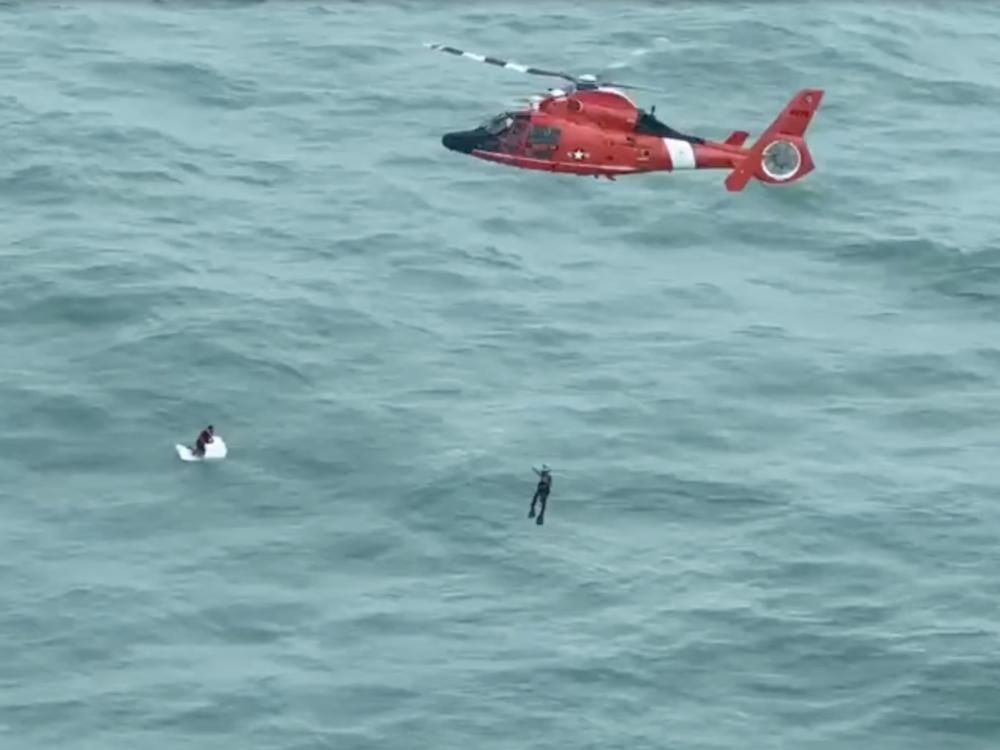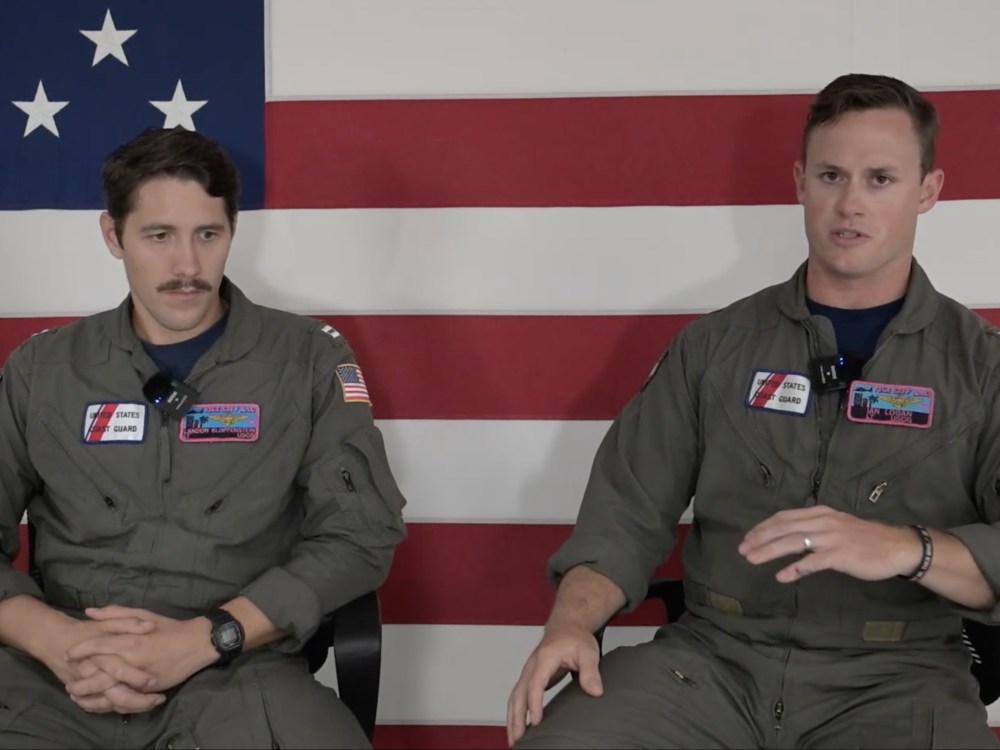Section Branding
Header Content
‘We were ecstatic:’ Coast Guard rescues a man clinging to a cooler in open water
Primary Content
When you’re looking for a person in an ocean, a physical description isn’t much help. But that’s what the Coast Guard helicopter crew had: The day after Hurricane Milton blasted into Florida’s Gulf Coast, they were searching for a boat captain who was somewhere in the water, wearing a red life jacket, black shirt, and black pants.
But the man also had an emergency locator beacon, a life jacket and a cooler. Thanks to those items, he weathered a night in the open water, buffeted by the hurricane’s strong winds and massive waves — and on Thursday, he was hoisted to safety, some 30 miles off of Longboat Key in the Gulf of Mexico.
“Oh man, we were ecstatic,” said Lt. Landon Klopfenstein, one of the Miami-based helicopter pilots, calling the successful rescue “a miracle.”
“We do a lot of searches for people in the water,” he added, in a video shared by the Coast Guard. “So to get to have a success story like this is not as common as we'd like it. And we were all very, very excited. We couldn't believe it, honestly, that he was OK.”
One day earlier, with Milton bearing down on Florida’s west coast, the man had been aboard a fishing boat called the Capt. Dave. He was trying to bring the vessel back into port after making repairs in the early hours of Wednesday when its rudder was disabled.
By the time the Coast Guard was alerted and got in touch with him, it was early afternoon, and conditions were deteriorating rapidly: The storm’s tropical storm-force winds were due to arrive at 2 p.m., followed by Milton’s fearsome power.
“The captain was instructed by the Coast Guard to don a life jacket and stay with the vessel's emergency position indicating radio beacon,” the service said. The last contact was around 6:45 p.m., less than three hours before Milton made landfall nearby.
Along with a physical description, the helicopter crew also had a search pattern, staring at miles of open water in hopes that the man had somehow survived the nearby passage of a Category 3 storm far off the shore of Sarasota — and that they could find him.
“It's a lot of math that determines where we're gonna go and search because we have limited resources, limited fuel,” Lt. Ian Logan, the helicopter’s other pilot, said.
Because another helicopter was on the same search pattern, the crew was told to prepare to head back to the coast. But then, Logan said, “We started to get an alert on our direction-finding equipment.”
The crew’s rescue swimmer asked the pilots how the system worked — and if it could differentiate between an aircraft and a personal locator beacon. They opted to trace the new signal, relying on directional bursts that came roughly once a minute.
“As we were turning to fly back, we started honing in on getting the signal, a stronger signal,” Klopfenstein said. “We got a relative bearing marker in the opposite direction, so we turned around [and] started going towards the last vector, the last bearing line that we received.”
“As we were trucking that way, our swimmer noticed some debris or an object about 2 o'clock on the aircraft,” he said.
At first, the object was hard to make out.
“And then as we got closer, we saw the arms reach up in the air and realized at that moment that we had found the survivor, floating clinging to a big fishing cooler,” Klopfenstein said.
The helicopter crew lowered the rescue swimmer into the water, and the man was hoisted to safety at around 1:30 p.m. — 17 hours after Milton's landfall.
“This man survived in a nightmare scenario for even the most experienced mariner," said Lt. Cmdr. Dana Grady, command center chief of Coast Guard Sector St. Petersburg, adding that the man is estimated to have experienced winds of 75-90 mph in 20-25-foot seas for an extended period.
After bringing the man aboard, the helicopter crew ferried him to Tampa General Hospital.
“I felt like today was one of those times where everyone's just kind of firing on all cylinders,” Logan said, noting the swimmer’s questions about the direction-finder and the positive attitude everyone brought to their mission.
“It was great because all that kind of came together to where our initiative resulted in us finding a guy that's been holding on to a cooler for 24 hours — like, through a hurricane.”
“Survival equipment is priceless,” Klopfenstein said.
And while a life jacket and emergency beacon are vital parts of safety preparations, it doesn’t hurt to have a solid cooler on hand, either.


